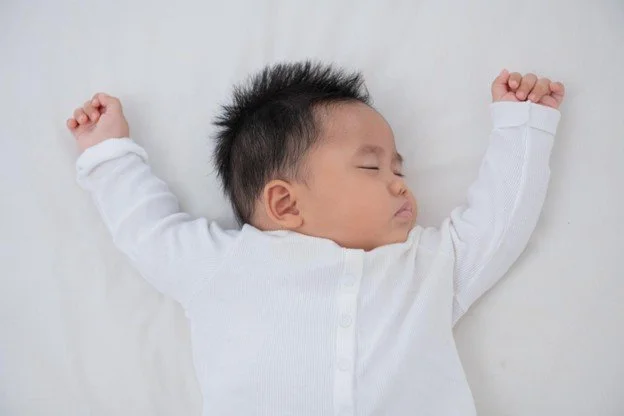Breathe a Little Easier: A Parent’s Guide to Clean Air and Healthy Infants
Bringing a baby home changes everything, including how you view your own environment. Suddenly, you're not just decorating a nursery—you’re inspecting the air your child will breathe day and night. Indoor air quality becomes a top priority, and with good reason: babies have developing lungs and immune systems, making them especially vulnerable to airborne pollutants. Ensuring your home has clean, breathable air isn’t just about comfort—it’s about laying the groundwork for lifelong health. Here’s how you can make your home a haven for your little one, one breath at a time.
What Affects Indoor Air Quality
Before you can improve your home’s air, you need to understand what’s in it. Dust, pet dander, mold spores, cleaning chemicals, and off-gassing from furniture and flooring all contribute to indoor pollution. Everyday habits like burning candles, cooking without a vent, or even leaving windows closed too long can trap contaminants inside. The age and structure of your home also matter—older homes can harbor more dust and mildew, while newer ones may contain VOCs from fresh paint or construction materials. Knowing these variables helps you prioritize the right interventions and keep pollutants at bay.
Clean Air Supports Better Infant Sleep
Sleep is when your baby’s brain and body recharge, and clean air plays a huge role in making that possible. Stuffy or polluted air can disrupt breathing patterns, raise the risk of respiratory infections, and cause restlessness. Babies are obligate nose breathers, especially in the first months, so keeping their environment clean directly impacts how well they rest. For real-world stories from parents who prioritized air quality and saw sleep improvements, check out these testimonials and see how the right air can lead to peaceful nights.
The Importance of HVAC Maintenance
Twice-a-year servicing of your HVAC system keeps it running efficiently and helps prevent air quality issues before they start. A professional technician can identify mold, replace filters, clean ducts, and ensure your system isn’t spreading dust throughout your home. You can connect with home repair experts near you using a dedicated app designed for convenience. The right app allows homeowners to quickly schedule service appointments, track the status of their repairs, and access important information about their home systems—all at your fingertips.
Respiratory Red Flags in Children
Infants can’t tell you when they’re having trouble breathing, but their bodies often do. Persistent coughing, rapid breathing, wheezing, or chronic nasal congestion are all signs your child might be reacting to poor air. If you notice your baby getting colds more often than expected or experiencing prolonged allergy-like symptoms, it’s worth taking a closer look at your home environment. Don’t dismiss subtle changes, either—sleep disturbances, fussiness, and even reduced appetite can sometimes be linked to low-grade respiratory discomfort. When in doubt, consult your pediatrician and consider assessing your indoor air quality.
Why Regular Vacuuming Matters
Think of vacuuming as more than just cleaning up visible mess—it’s air care in disguise. Carpets, rugs, and even upholstery can act like sponges, soaking up dust mites, skin flakes, pet hair, and mold spores. Regular vacuuming—especially with a machine equipped with a HEPA filter—prevents these irritants from becoming airborne. Aim for at least twice a week in high-traffic areas and consider doing it more often in the nursery. For added protection, go the extra mile with a deep carpet clean every few months or opt for hard-surface flooring that’s easier to keep allergen-free.
Weighing the Investment
If you’re serious about safeguarding your baby’s lungs, an air purifier can be a game-changer. These devices work by pulling air through filters that trap microscopic pollutants like pollen, pet dander, and even bacteria. When selecting one, choose a model certified for the room size you’ll be using and make sure it includes a true HEPA filter. Place it near your baby’s crib for the most impact, and keep windows closed while it’s running. It won’t replace the need for other cleaning efforts, but it adds an extra layer of security you’ll be grateful for during cold and allergy seasons.
Indoor Plants That Clean the Air
Not all heroes wear capes—some sit in pretty pots. Certain houseplants, like spider plants, peace lilies, and snake plants, are natural air purifiers. They absorb pollutants like formaldehyde, benzene, and carbon monoxide while producing oxygen in return. Just be sure to choose non-toxic varieties safe for homes with small children and pets. A strategically placed plant or two in the nursery or living room not only helps clean the air but also adds a calming, beautiful element to your home. Think of them as quiet guardians of your family’s well-being.
Every breath your baby takes is shaped by the choices you make about your home. From switching out filters to adding an air purifier or just vacuuming more often, you’re building a healthier foundation one action at a time. It’s not about being perfect—it’s about being proactive. And when you lay your child down to sleep at night, you’ll know you’re doing everything you can to help them wake up strong, happy, and well.
Discover the secret to a well-rested family with Sleep Now Baby and transform your nights into peaceful, rejuvenating sleep for both you and your baby!




